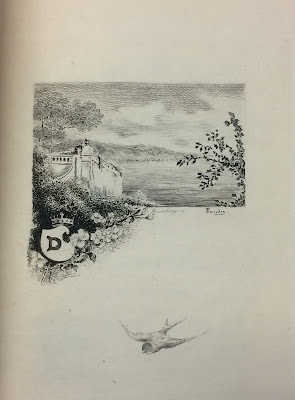Recently, an ephemera dealer in Moscow sold a Russian postcard with an image of Charles Shannon's lithograph 'The Incoming Tide' that was published by the artist in 1908/1909.
 |
| Charles Shannon, 'The Incoming Tide' (1908/1909) [Russian postcard] |
The British Museum describes the original lithograph as follows:
Two nude women on a beach, both seen from behind, one laying on the sand with head raised and the other kneeling with arms upraised and looking out to sea. 1908/9.
This lithograph can be compared to another one, called 'The Rising Tide', printed around the same time.
The Russian postcard was manufactured almost sixty years later, in 1957. The backside gives ample information, which was translated by my friends the poet Robbert-Jan Henkes and his wife Elena Pereverzeva, both translators from the Russian.
 |
| Charles Shannon, 'The Incoming Tide' (1908/1909) [Russian postcard] |
The card was published by the Изобразительное искусство, the Fine Art Publishing House in 1957. The title was given as 'High Tide', and the card was printed by the VNIIPPiT, probably the Всесоюзный Научно-Исследовательский Bнститут Полиграфической Промышленности и Типографии, or the Soviet Scientific Research Institute for the Graphic Arts and Typographical Industry.
The price was ten kopecks, and the number of copies printed was an astonishing 35.000.
The original lithograph had been printed (apart from a few trial proofs) in 36 copies, of which twelve each were printed in green, sanguine and grey. The earliest proofs were printed in 1908, the edition was printed in 1909. The postcard reproduces the version in grey.
Why this interest in British art, and especially Charles Shannon in Russia, and why in 1957? Copies of his original lithographs were sold by dealers abroad, the earliest ones in Germany and the United States, but apparently they travelled all the way to Moscow, and were found appropriate as postcard images.
There might be more of these postcards.











